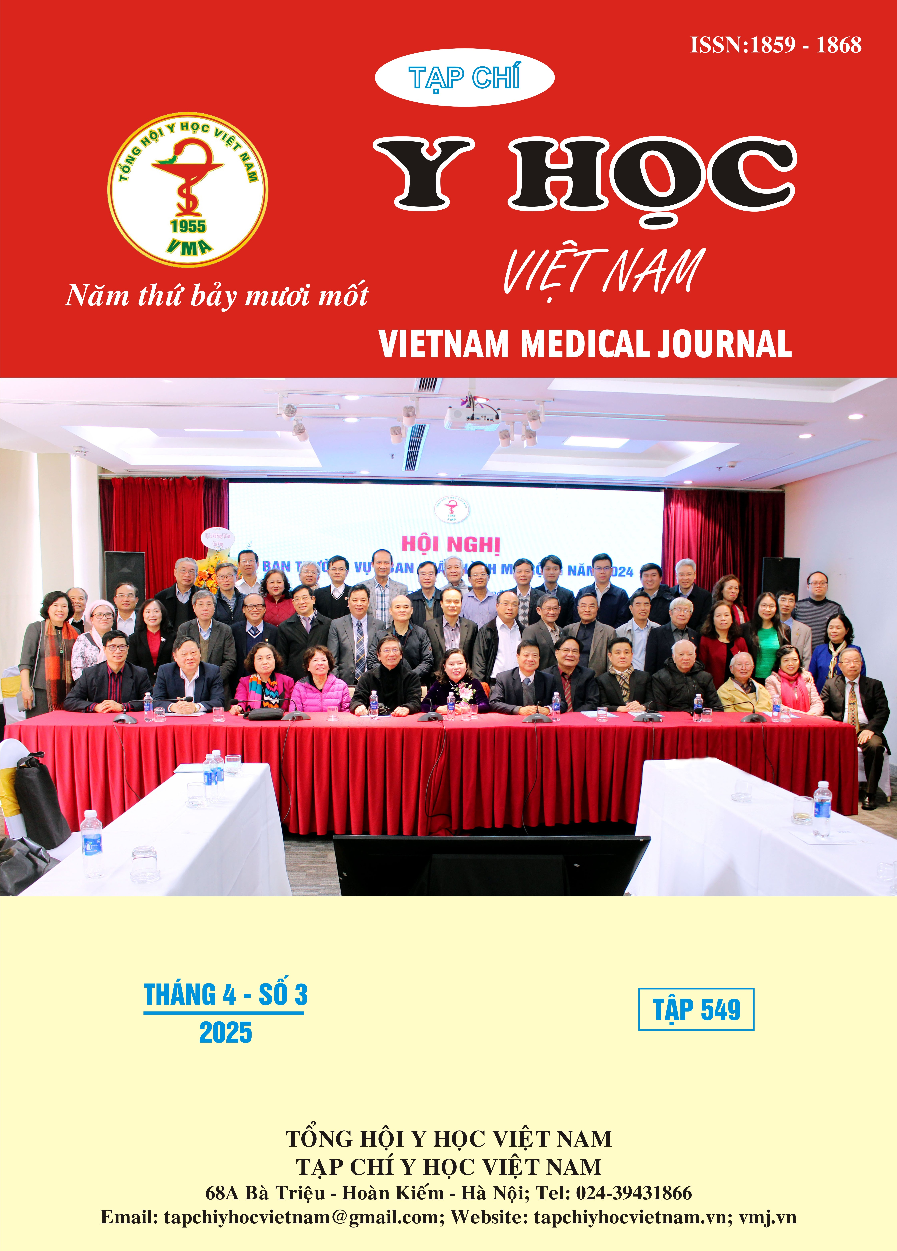THE CORRELATION BETWEEN OCCLUSION AND ANKYLOGLOSSIA OF ORTHODONTIC PATIENTS AT THE NATIONAL HOSPITAL OF ODONTO-STOMATOLOGY, HANOI
Main Article Content
Abstract
Objective: Evaluate the relationship between occlusion and tongue range of motion of patients with ankyloglossia at the National hospital of Odonto-Stomatology, Hanoi. Methods: A cross-sectional descriptive study was conducted on 60 patients, evaluating and tongue range of motion, evaluating crossbite, overbite, and malocclusion according to Angle and mandibular plane angle. And studying the relationship between the above factors. Results: Although patients with more severe anterior tongue movement had a higher risk of crossbite and increased mandibular plane angle (OR=1.82, OR=1.63) and those with a lower risk of overbite and class III malocclusion (OR=0.25. OR=87). Or more limited posterior tongue movement increased the risk of crossbite (OR=8.83) and vice versa with the risk of overbite, class III malocclusion, increased mandibular plane angle (OR=0.51; OR=0.9; OR=0.68). However, all of the above associations were not statistically significant (p>0.05). Conclusion: No association was found between the tongue range of motion in patients with ankyloglossia and crossbite, overbite, class III malocclusion, and increased mandibular plane angle. Research on larger sample sizes is needed to avoid missing risk factors, as well as increase the number of subjects with each degree of tongue mobility restriction, thereby helping to more accurately assess the association with malocclusion.
Article Details
Keywords
ankyloglossia, occlusion, tongue range of motion
References
2. Cruz PV, Souza-Oliveira AC, Notaro SQ, et al. Prevalence of ankyloglossia according to different assessment tools: A meta-analysis. J Am Dent Assoc 1939. 2022;153(11):1026-1040.e31. doi:10.1016/j.adaj.2022.07.011
3. Calvo-Henríquez C, Neves SM, Branco AM, et al. Relationship between short lingual frenulum and malocclusion. A multicentre study. Acta Otorrinolaringol Esp. Published online July 20, 2021:S0001-6519(21)00031-5. doi:10.1016/ j.otorri.2021.01.002
4. Meenakshi S, Jagannathan N. Assessment of Lingual Frenulum Lengths in Skeletal Malocclusion. J Clin Diagn Res JCDR. 2014;8(3): 202-204. doi:10.7860/JCDR/2014/ 7079.4162
5. Zaghi S, Shamtoob S, Peterson C, et al. Assessment of posterior tongue mobility using lingual-palatal suction: Progress towards a functional definition of ankyloglossia. J Oral Rehabil. 2021;48(6):692-700. doi:10.1111/ joor.13144
6. Martinelli RL de C, Marchesan IQ, Berretin-Felix G. Lingual frenulum protocol with scores for infants. Int J Orofac Myol Off Publ Int Assoc Orofac Myol. 2012;38:104-112.
7. Yoon AJ, Zaghi S, Ha S, Law CS, Guilleminault C, Liu SY. Ankyloglossia as a risk factor for maxillary hypoplasia and soft palate elongation: A functional - morphological study. Orthod Craniofac Res. 2017;20(4):237-244. doi:10.1111/ocr.12206
8. Northcutt ME. The lingual frenum. J Clin Orthod JCO. 2009;43(9):557-565.
9. Mukai S, Mukai C, Asaoka K. Congenital ankyloglossia with deviation of the epiglottis and larynx: symptoms and respiratory function in adults. Ann Otol Rhinol Laryngol. 1993;102(8 Pt 1):620-624. doi:10.1177/000348949310200810
10. Ruffoli R, Giambelluca MA, Scavuzzo MC, et al. Ankyloglossia: a morphofunctional investigation in children. Oral Dis. 2005;11(3): 170-174. doi:10.1111/j.1601-0825.2005.01108.x


